![]()
Thursday, October 29, 2015 | By Dr. Raz Zimmt[1]
This study is originally published by The Meir Amit Intelligence and Terrorism Information Center. The study is structured in nine sections (see below), which if read in conjunction with each other, draws a complete picture of Major General Qasem Soleimani (Haj Qasem), commander of the Iranian Islamic Revolutionary Guards Corps’ Qods Force, instigator of Iranian Subversion and Terrorism in the Middle East and around the Globe.
Qasem Soleimani’s background[3]

Sohrab Soleimani, Qasem Soleimani’s younger brother, head of the Tehran province prisons (Fars News, August 12, 2015).
Qasem Soleimani (Hajj Qasem) was born on March 11, 1957, in the village of Qalat Molk in the Rabor district of Kerman Province in southeastern Iran. The area is mountainous and has a tribal population. Soleimani has five siblings. The oldest is a sister, now about 60; Qasem was the middle child. His brother Sohrab, seven years his junior, is head of the Tehran Province prisons.
In 1970, when Soleimani was 13 years old, he graduated from elementary school and moved with a relative to the city of Kerman, the provincial capital. The two worked in construction for the Kerman Water Organization to help the family repay the debts of his father, who was a farmer. He was active in sports and worked as a fitness trainer, and apparently has a black belt in karate.

Soleimani with his father (left) and mother (who died in September 2013) (Mashriq News, September 29, 2014, Fars News, April 20, 2014).
Soleimani began his revolutionary activities against the Shah in Kerman in 1976. In 1979, after the Islamic Revolution, he joined the IRGC when it established a command council in the city of Kerman. Like many other IRGC commanders, he had no previous military experience. However, he showed himself capable and was quickly appointed to command positions, and according to a comrade at the time, he participated in a 45-day military course. His first military mission was in 1979, when he was sent to help suppress a Kurdish separatist uprising in the West Azerbaijan Province in northwestern Iran. He was stationed in the city of Mahabad, apparently as part of a company-size unit of irregulars sent to administer and defend the city. The unit helped suppress the Kurdish uprising and put an end to the bloody sectarian clashes between Azeris and Kurds.
From Mahabad Soleimani returned to Kerman and was appointed to administer the local IRGC garrison. When the Iran-Iraq War broke out in the fall of 1980 he was sent to the southern front where he commanded a force from Kerman. He rapidly climbed the ladder of command and by the time he was in his twenties he commanded the IRGC’s 41st Sarollah Division.
After the Iran-Iraq war, the division under Soleimani’s command was sent back to Kerman to fight drug smugglers operating along Iran’s southeastern border. His extensive experience in the Iran-Iraq War and his successful operations against the smugglers led the supreme leader to appoint him as commander of the Qods Force at the end of 1997 (or the beginning of 1998, the exact date is unclear). His appointment as commander of the Qods Force came at a time when Iraq no longer posed a significant threat to the Islamic regime in Tehran. The regime’s attention was drawn to events in Afghanistan and the rise of the Taliban. In addition to strengthening the Iranian forces along the Afghan border, Soleimani dealt with the challenge by using non-conventional military methods, and at the same time directed subversive activities on Afghan soil from Tajikistan and the areas controlled by the Northern Alliance.
In the years since Qasem Soleimani’s appointment as the Qods Force commander, it has expanded and developed. The numbers of its forces and missions in the Middle East and elsewhere have increased. In the meantime, Soleimani’s status in the Iranian leadership has risen. In January 2011, Supreme Leader Ali Khamenei promoted him to the rank of major general, the highest rank in the IRGC and equal to the rank of IRGC commander.
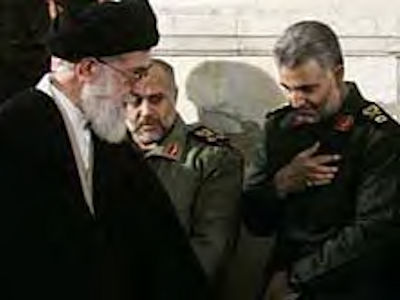
Qasem Soleimani bows before Supreme Leader Ali Khamenei (Asiran.com, July 3, 2015). The Qods Force’s subversive and terrorist activities are supported by Ali Khamenei and the rest of the Iranian leadership.
Soleimani has three sons, one of whom is married to the daughter of his younger brother Sohrab, and two daughters, one of whom, named Narges, lives in Malaysia.
![]()
You can find the introduction and other sections here:
- Introduction: Portrait of Qasem Soleimani, commander of the Iranian Islamic Revolutionary Guards Corps’ Qods Force
- Section 2: Qasem Soleimani’s involvement in the Syrian civil war
- Section 3: Qasem Soleimani’s involvement in Iraq
- Section 4: Qasem Soleimani’s involvement in the Palestinian arena and Israel
- Section 5: Qasem Soleimani’s involvement in Lebanon
- Section 6: Qasem Soleimani’s involvement in Yemen and other Middle Eastern states
- Section 7: Qasem Soleimani’s involvement in internal Iranian politics
- Section 8: Qasem Soleimani’s public image
- Section 9: Possible lifting of international sanctions on Qasem Soleimani in the wake of the nuclear agreement
![]()
Notes:
[1] This study of Qasem Soleimani was written for the Intelligence and Terrorism Information Center (ITIC) by Dr. Raz Zimmt, a research fellow in the Alliance Center for Iranian Studies in Tel Aviv University and a research fellow at the Forum for Regional Thinking. His fields of expertise include the politics, society, foreign policy and social networks in the Islamic Republic. The study was coordinated with ITIC research fellows and includes information previously appearing in ITIC publications about the Qods Force.
[3] Some of the material in this section comes from the August 7, 2012 bulletin “The Quds Force, an elite unit of the Iranian Revolutionary Guards, spearheads Iran’s global terrorist campaign,” There is also biographical material written by Ali Alfoneh, who studies the IRGC: Ali Alfoneh, “Brigadier General Qassem Soleimani,” American Enterprise Institute for Public Policy Research, January 2011. Additional information was taken from a Fars News interview with Qasem Soleimani’s brother Sohrab Soleimani, on August 12, 2015.



 RSS
RSS


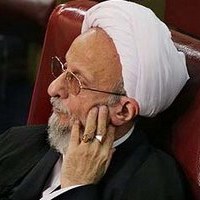
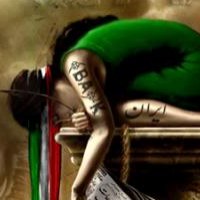

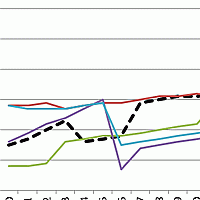
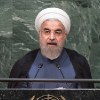













Latest Comments
Hello Mike, Thank you for your positive feedback to the article. I felt there wasn’t too much critical analysis of ...
Thanks for this considered and well constructed article. A follow up article on the manner in which the editorial contro...
THE CLUELESSNESS OF CLAIMING THAT OBAMA'S MIDDLE EAST POLICIES WERE A FAILURE CANNOT BE FURTHER FROM THE TRUTH, WHAT THE...
As long as Obama is the president of the usa do not trust the us government......
Thank you for an good read....